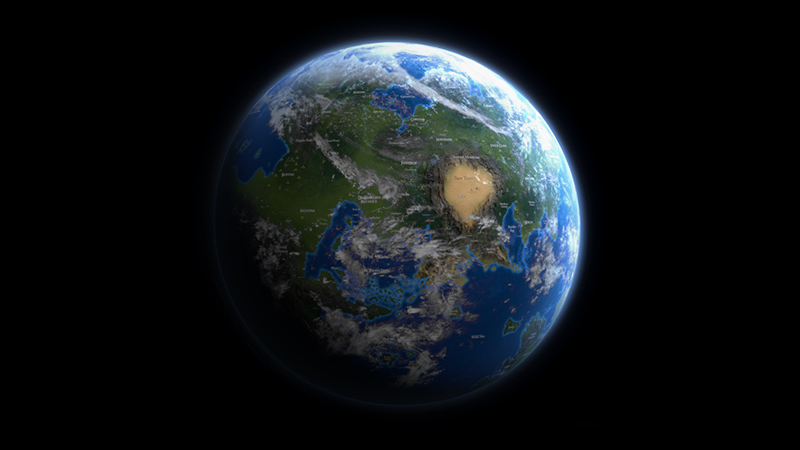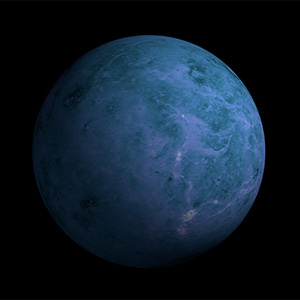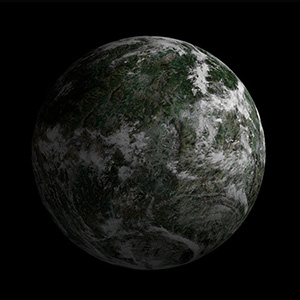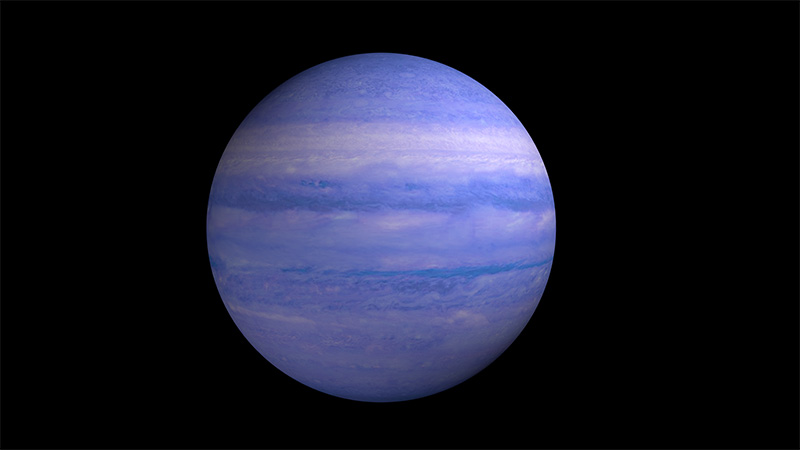

![]()
The Khorasian system consists of a binary star, five planets, an asteroid belt and a miscellany of comets and other stellar debris. The fact that there are other planets besides Khoras has allowed some of the more advanced societies to form a Copernican theory that the world orbits the suns. The night sky of Khoras is filled with many breath-taking constellations. There is the Great Dragon, the Archer, the Spider and the Wizard.
![]()
The star about which Khoras orbits is a binary star. The first of these two is a large, yellow star, very similar to Earth's sun, with a thick, gaseous cloud about it. This cloud is semi-transparent and is difficult to see from the surface of Khoras. The second sun is a much smaller, whitish-blue dwarf which burns brightly. The gaseous envelope which surrounds Karrym is continually pulled from the yellow star into the blue dwarf in a streaming, shimmering ribbon of orange color. These two celestial bodies orbit each other in an elliptical, but stable orbit.
![]()

Altreth is the planet closest to the twin suns. It is a small airless world, one sixth the size of Khoras, with a rocky grey surface ravaged by craters, hardened lava and scorched rock. Altreth has no atmosphere and no moons. Astromancers (those mages who study the heavens with magic) have detected no life on this planetoid. It is little more than a barren rock.
![]()

Byrel is a small yellow and orange desert world about half the size of Khoras. It has a thin atmosphere which supports a wispy trace of clouds. Byrel has two tiny moons. Byrel and Khoras pass near to each other every few years allowing astromancers and Kalimuran technomancers to turn their spyglasses skyward and study the ribbons of color that continually shift and dance across this world's surface. Many wizards and scholars are hopeful that Byrel may support life. However, those few who have attempted to find such life with scope or spell have failed.
![]()

Khoras is a solid planetoid similar to Earth in size and mass with a thick atmosphere and plentiful water. Though it is the world best known, it is still largely unmapped and unexplored by the civilized races. Of the five planets in the system, many scholars believe that Khoras is the only one to sustain life. Khoras is tilted on its axis (31.4 degrees) and so experiences four seasons as does Earth: winter, spring, summer and fall. Khoras has three moons, detailed below.
![]()
Khoras has three daughter moons that bejewel the night sky. Having three moons creates a very complex tidal pattern, but since Mektor’s mass is so much greater than the other two combined, only its effects on the tides are usually noticed. Therefore, Khoras experiences two high tides and two low tides as does Earth.
 |
The Great Moon, Mektor, dominates the sky with her soft red light and slow graceful pace of 38 days. Her orbital period coincides with the phase shifts of the two suns. She glides along in a high orbit, but is still easy to see because of her great size. Many mountain ranges and craters decorate her surface and can be seen from Khoras with the naked eye. |
 |
The pale blue luminance of Thrykar often decorates the clouds. It circles Khoras every 13 days in a closer, tighter orbit than Mektor. Thrykar’s surface appears smooth in many places and almost seems to shimmer. |
 |
Gliding swiftly through the night sky is Night’s
Jewel which is easily recognized by its bright emerald color. This tiny
moon races through the night sky in a low, tight orbit completing its trip
in just 9 days. Because of its small size, details of the surface are
difficult to make out.
Only speculations and theories have been offered to explain its color. Although scholars maintain that, according to ancient texts, the moon was not always this color and that it's green color slowly appeared during the Great War. Several scholars have put forth the theory that the Sundering is responsible for this unusual color change. |
Once every 4 months, Night's Jewel and Thyrkar are full on the same night.
Once each year, Mektor and Night's Jewel are full on the same night.
Once every year and a half, Thrykar and Mektor are full on the same night.
Once every thirteen years, all three moons are full together which produces terrible sea storms and very high tides.
![]()

Qytan is the fourth and largest of all the planets in the Khorasian system. This gas giant swells to over ten times the mass and diameter of Khoras. It is almost entirely blue with a few wisps of light blue and white. Seven small moons orbit Qytan. With the aid of magic or a spyglass, Khorasian bound star gazers have noticed small swirling patches of color and flashes under Qytan's surface. Some argue that those are indications of life while others believe them to be massive storms that float in the belly of this gas giant.
![]()
Several thousand small planetoids orbit the twin suns between the orbits of the fourth and fifth planets. These tiny planetoids and asteroids vary in size from grains of sand to spheres more than three hundred kilometers in diameter. As far as astromancers can determine, all are airless, lifeless bodies.
![]()

The fifth planet and furthest from the sun is Juxi, a small frozen planet consisting of nothing more than ice and snow. Because of it's extreme distance, little is known of Juxi beyond what has been ascertained through divination magic. Juxi has no atmosphere and no moons.
![]()
This website was last updated February 29, 2024. Copyright 1990-2024 David M. Roomes.